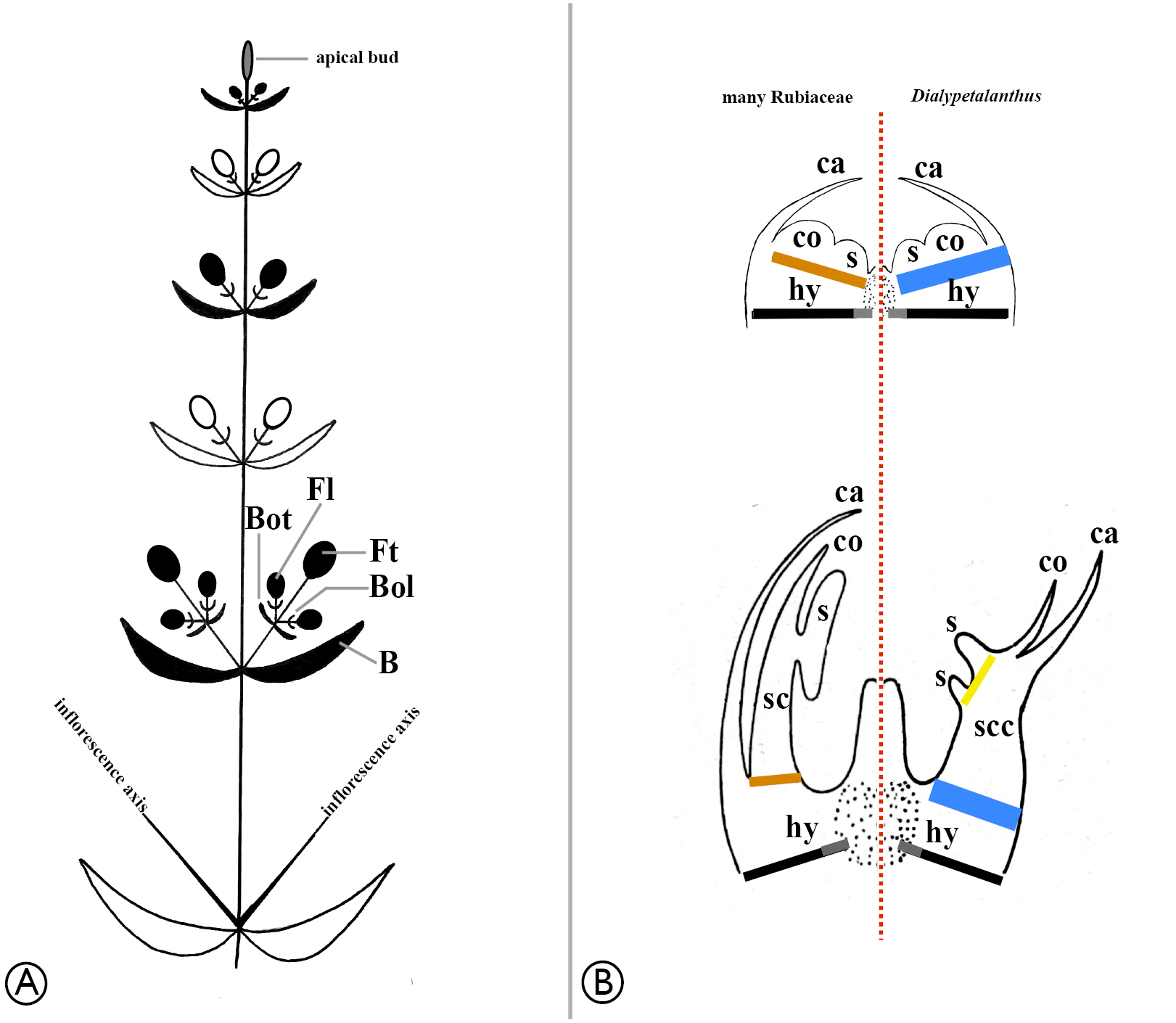
|
||
|
Theoretical outline of the inflorescence (A) and floral development (B, after Leins and Erbar (2010: 102) and Vrijdaghs et al. (2015: 251)) in Dialypetalanthus. A. White and black pairwise structures perpendicular to each other. Apical bud consisting of two opposite bracts surrounding an underdeveloped, terminal, cymosely branched inflorescence unit. B. Left, floral development in many Rubiaceae, right in Dialypetalanthus. Bars represent circular intercalary meristems respectively developing a hypanthium (black-grey), a stamen-corolla tube (amber), a stamen-corolla-calyx tube (blue), stamens (yellow). Dotted area, gynoecial locular zone. Symbols: B, bract; Bol, bracteole of lateral flower; Bot, bracteole of terminal flower; ca, calyx (lobes); co, corolla (lobes); Fl, lateral flower; Ft, terminal flower; hy, hypanthium; s, stamen; sc, stamen-corolla tube; scc, stamen-corolla-calyx tube. |